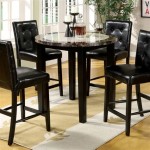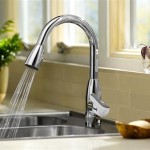Foam Soap Dispenser for Kitchen Sink: A Comprehensive Guide
The foam soap dispenser for kitchen sink is an increasingly popular fixture in modern kitchens. It represents an evolution in hand hygiene and cleaning efficiency compared to traditional liquid soap dispensers. Understanding the benefits, types, installation considerations, and maintenance requirements of foam soap dispensers is crucial for homeowners, contractors, and anyone seeking to upgrade their kitchen environment.
Foam soap dispensers work by mixing liquid soap with air to create a foamy consistency. This process utilizes a specialized pump mechanism within the dispenser. The liquid soap, typically a concentrated formula, is drawn into the pump chamber. Simultaneously, air is introduced into the chamber. The pump then forces this mixture through a mesh or nozzle, creating a light, airy foam. This foam delivers the cleaning properties of the soap while using significantly less liquid soap compared to direct application.
Benefits of Using a Foam Soap Dispenser
There are several key advantages to using a foam soap dispenser in the kitchen. These benefits contribute to both economic savings and improved hygiene practices.
One of the most significant benefits is cost-effectiveness. Foam soap dispensers reduce soap consumption by up to 75% compared to standard liquid soap dispensers. Because the soap is pre-mixed with air, a smaller amount is required to achieve the same level of cleanliness. This leads to longer intervals between refills, lowering the overall cost of soap over time. The concentrated soap refills designed for foam dispensers are also typically more affordable per volume than pre-diluted liquid soaps.
Environmental considerations are also important. Reduced soap consumption translates to less waste. Fewer plastic bottles are needed for refills, decreasing the environmental impact associated with plastic production and disposal. The reduced amount of soap entering the wastewater system also minimizes the potential for negative environmental consequences related to chemical runoff.
Hygiene is significantly improved. The controlled dispensing of foam reduces the risk of soap drips and messy countertops. This makes cleaning easier and less frequent. Furthermore, the consistent dosage ensures that users apply an adequate amount of soap for effective handwashing, promoting better hygiene practices within the household. Many foam soap dispensers are also designed with touchless operation, further minimizing the spread of germs and bacteria.
Aesthetic appeal is another factor. Foam soap dispensers often have sleek and modern designs that can enhance the overall look of the kitchen. They are available in a variety of finishes and styles to complement different kitchen decors. Many models can be mounted directly onto the sink, freeing up valuable countertop space and creating a cleaner, more organized appearance.
Types of Foam Soap Dispensers for Kitchen Sinks
The market offers a variety of foam soap dispensers, each with its own set of features and functionalities. Understanding these different types is crucial for selecting the best option for a specific kitchen setup.
Manual Foam Soap Dispensers: These are the most common and generally the most affordable type. They operate using a manual pump mechanism. The user presses down on a pump head or lever to dispense the foam. Manual dispensers are reliable and require no electricity, making them suitable for kitchens without readily available power outlets near the sink. However, they require physical contact, which can be a minor concern regarding hygiene.
Automatic (Touchless) Foam Soap Dispensers: Automatic dispensers use sensors to detect the presence of hands and automatically dispense a pre-determined amount of foam. This hands-free operation significantly reduces the risk of cross-contamination and promotes better hygiene. Automatic dispensers are typically battery-operated or require a power outlet. While they offer superior hygiene, they tend to be more expensive than manual models and require periodic battery replacement or access to a power source.
Built-in Foam Soap Dispensers: These dispensers are integrated directly into the kitchen sink or countertop. They offer a seamless and aesthetically pleasing look. Built-in dispensers typically connect to a large soap reservoir located under the sink, reducing the frequency of refills. Installation requires specific plumbing knowledge and may involve modifying the existing sink or countertop. While more expensive to install initially, built-in dispensers offer a convenient and long-lasting solution.
Countertop Foam Soap Dispensers: These are standalone units that sit on the kitchen countertop. They are easy to install and require no permanent modifications to the sink or countertop. Countertop dispensers are available in a wide range of styles and materials, allowing homeowners to choose an option that best matches their kitchen decor. However, they can take up valuable countertop space, which may be a concern in smaller kitchens.
Installation and Maintenance of Foam Soap Dispensers
Proper installation and regular maintenance are essential for ensuring the longevity and optimal performance of a foam soap dispenser. The specific installation and maintenance procedures vary depending on the type of dispenser.
For countertop dispensers, installation is straightforward. Simply place the dispenser on the countertop near the sink. Fill the reservoir with the appropriate foam soap refill solution. Ensure the dispenser is stable and not prone to tipping over. Regular cleaning of the dispenser exterior with a damp cloth is recommended to maintain its appearance.
Built-in dispensers require more complex installation. This typically involves drilling a hole in the sink or countertop to accommodate the dispenser nozzle. The dispenser is then connected to the soap reservoir located underneath the sink. Plumbing connections need to be properly sealed to prevent leaks. Professional installation is often recommended to ensure proper functionality and avoid damaging the sink or countertop.
Automatic dispensers generally require battery installation or connection to a power outlet. Follow the manufacturer's instructions for battery replacement or power cord connection. The sensor area should be cleaned regularly to ensure accurate detection. Avoid exposing the dispenser to excessive moisture or direct sunlight.
Regardless of the type of dispenser, regular cleaning of the pump mechanism is crucial. Over time, soap residue can build up and clog the pump, reducing its effectiveness. Consult the manufacturer's instructions for recommended cleaning procedures. Some dispensers may require periodic flushing with warm water to remove accumulated residue. Using the correct type of soap specifically formulated for foam dispensers is also essential. Using regular liquid soap in a foam dispenser can damage the pump mechanism and void the warranty.
Choosing the right foam soap is important. These soap solutions are designed to be diluted with air to create the foam. Using the wrong type of soap can affect the dispenser's performance and potentially damage the pump. Specifically, avoid using soaps that are excessively thick or contain solid particles, as these can clog the dispenser mechanism. Look for soap refills that are explicitly labeled as "foam soap" or "for foam dispensers."
Troubleshooting common issues is also necessary. If the dispenser stops dispensing foam, the first step is to check the soap level in the reservoir. If the reservoir is full, the next step is to check for any clogs in the pump mechanism or nozzle. Consult the manufacturer's instructions for cleaning procedures. If the dispenser is battery-operated, check the battery level. Low batteries can cause the dispenser to malfunction. If the problem persists, contact the manufacturer for further assistance.
The selection of the appropriate material for the dispenser is also a key consideration. Many foam soap dispensers are made from plastic, stainless steel, or a combination of both. Plastic dispensers are generally more affordable but may be less durable than stainless steel models. Stainless steel dispensers are more resistant to corrosion and offer a more premium aesthetic. However, they can be more expensive. Choose a material that is durable, easy to clean, and matches the overall style of the kitchen.
The capacity of the soap reservoir is another factor to consider. Larger reservoirs require less frequent refills, which can be convenient for busy households. However, larger reservoirs may also take up more space. Consider the frequency of use and the available space when choosing a dispenser with an appropriate reservoir capacity.

Konghyp Foaming Soap Dispenser Foam Hand Refillable For Bathroom Or Kitchen Sink 5 7x2 9 In Bottles Body Wash

Soap Dispenser Clara Glass Foam Etsy

Gfhfhitj Foaming Soap Dispenser Thick Glass Foam For Bathroom Or Kitchen Sink 12 7 Oz Clear Pump Bottles Hand Body Wash

Itouchless Ultraclean Rose Gold Sensor Foam Soap Dispenser Sfd002g The Home

Automatic Foaming Hand Soap Dispenser 250ml Touchless Liquid For Bathroom Kitchen Office

Better Living Foam Soap Dispenser In Grey 70230 The Home

Bl Gold Glass Foam Soap Dispenser Rail19

350ml Automatic Soap Dispenser Hands Free Ir Sensor Touchless Foaming Liquid Us Ebay

Yilyih Simple Human Soap Dispenser Foaming Thick Glass Foam For Bathroom Or Kitchen Sink 6 88x2 95x2 95in Clear Pump Bottles Hand Body Wash 1 Pack 400ml Circular Walmart Com

Rubbermaid 1938171 Tc Oneshot Counter Mount Low Profile Plastic Foam Hand Soap Dispenser With Touch Free








